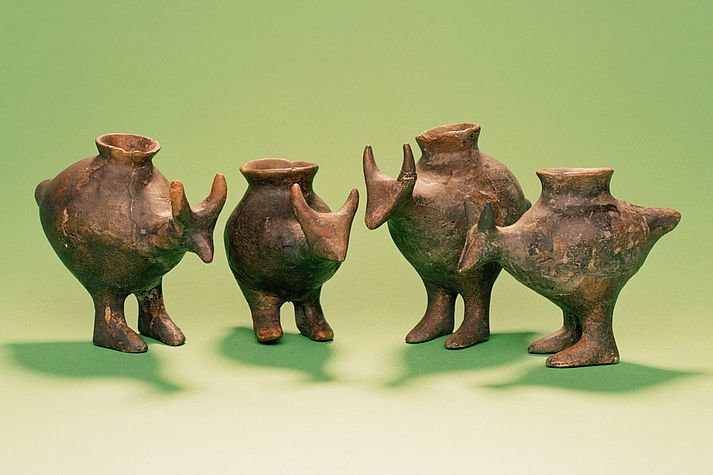In 2019, a group published a paper showing that cups found in Bronze Age children’s graves had contained ruminant milk, demonstrating that children were likely being given at least supplemental nutrition of animal milk. These are graves with children in them, so it’s possible that they were receiving milk as part of an attempt to kept them fed while ill (and indeed anyone might receive such easily consumed calories on “bed rest”). But some of these children-associated cups were particularly whimsical, having little legs or even animal heads. Admittedly, the cups that had residue analyzed were fairly pedestrian “bottle” cups:

But other cups, particularly a set of older cups from Vösendorf in Austria, were thoroughly delightful:

Not surprisingly, many editors chose to use the Vösendorf photos for lay-audience media about the discovery.
This sent me down a little rabbit hole about these ancient finds – discovered both in excavations of settlements and as grave goods, in varying shapes and sizes, some more like little animal models, and some simple vessels with spouts or “straws” on them. So I’ve decided to start replicating them.
Pottery in Bronze Age Europe was earthenware fired a single time in pits or in simple, only modestly insulated kilns. The potters in that place and era did not have the high-efficiency kilns already being used to vitrify stoneware and glaze it in the Far East. They used burnishing and polishing to process the surfaces of their pottery, although it would not have been as water-tight as modern glazed pottery.
Pottery in this place and era tended to have a distinctive brown color or to be burnished with a blackening material, like graphite, or painted. I don’t have easy access to brown low-fire clay, so rather than stain red clay, I’m just going ahead and use the red clay as is as I explore these shapes, trying to stay close to the single-fire process, first with electric kilns at the local pottery studio and ultimately, I hope, advancing to pit-firing.
I am fortunate that the same group that published the 2019 Nature paper has collected information about feeding vessels likely used with children, including assembling a wonderful table of extant finds listing their context and sizes, publishing it in 2021 in Feeding Babies at the Beginnings of Urbanization in Central Europe. Stay tuned as I work my way through these shapes. (And beyond!)
